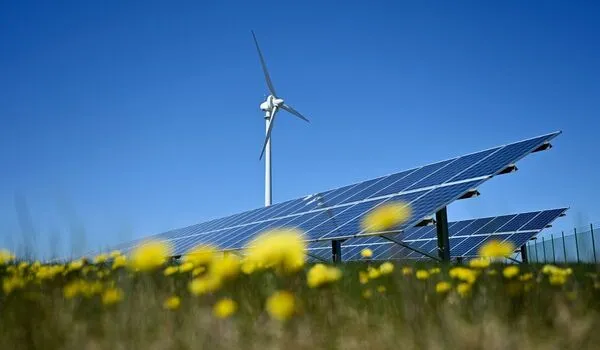Wind energy currently accounts for more than 3% of global electricity consumption, with this figure expected to rise to 5% by 2020. Wind energy could meet 9% of global electricity demand and more than 20% of demand in Europe by 2040, according to the International Energy Agency.
According to a report released by the US Department of Energy (DOE) and prepared by Lawrence Berkeley National Laboratory, wind energy continues to see strong growth, solid performance, and attractive prices in the United States (Berkeley Lab). Wind’s levelized costs for newly built projects are just over $30 per megawatt-hour (MWh), far below its grid-system, health, and climate benefits.
“Wind energy prices – particularly in the central United States, and supported by federal tax incentives – remain low even with ongoing supply chain pressures, with utilities and corporate buyers selecting wind as a low-cost option,” said Ryan Wiser, a senior scientist in Berkeley Lab’s Energy Technologies Area. “Considering the health and climate benefits of wind energy makes the economics even better,” he added.
Wind energy prices – particularly in the central United States, and supported by federal tax incentives – remain low even with ongoing supply chain pressures, with utilities and corporate buyers selecting wind as a low-cost option.
Ryan Wiser
Key findings from DOE’s annual “Land-Based Wind Market Report” include the following:
(1) Wind power is becoming a larger part of the electricity supply. Wind power capacity in the United States increased at a rapid pace in 2021, with 13.4 gigatonnes (GW) of new capacity added, representing a $20 billion investment and 32% of total capacity additions in the country. Wind energy output increased to more than 9% of total national electricity supply. At least 247 GW of wind capacity is vying for access to the transmission system, with 77 GW of that capacity coming from offshore wind and 19 GW from hybrid plants that combine wind with energy storage or solar.
(2) Wind project performance has improved over time. The average capacity factor (a measure of project performance) for recently completed projects was nearly 40%, which was significantly higher than for earlier projects. The highest capacity factors are seen in the interior of the country.
(3) Turbines are getting bigger. Larger turbines mounted on taller towers with longer blades have contributed to improved plant performance. No turbines used blades 115 meters in diameter or larger in 2011, but by 2021, 89% of newly installed turbines used such rotors. According to proposed projects, total turbine height will continue to rise.
(4) Over the last decade, low wind turbine pricing has driven down installed project costs. Wind turbine prices in 2021 averaged $800 to $950/kilowatt (kW), a 5% to 10% increase over the previous year but significantly lower than in 2010. The average installed cost of wind projects in 2021 was $1,500/kW, a decrease of more than 40% from the peak in 2010, but consistent with recent years. The lowest costs were found in Texas.

(5) Wind energy prices have risen, but remain low, around $20/MWh in the interior “wind belt” of the country. After topping out at $75/MWh for power purchase agreements executed in 2009, the national average price of wind has dropped – though supply-chain pressures have resulted in increased prices in recent years. In the interior “wind belt” of the country, recent pricing is around $20/MWh. In the West and East, prices tend to average above $30/MWh. These prices, which are possible in part due to federal tax support, fall below the projected future fuel costs of gas-fired generation.
(6) Wind prices are often attractive compared to wind’s grid-system market value. The value of wind energy sold in wholesale power markets is affected by the location of wind plants, their hourly output profiles, and how those characteristics correlate with real-time electricity prices and capacity markets. The market value of wind increased in 2021 and varied regionally from below $20/MWh to over $40/MWh, a range roughly consistent with recent wind energy prices.
(7) The average levelized cost of wind energy for plants built in 2021 was $32/MWh. Levelized costs vary by time and geography, but the national average in 2021 was $32/MWh, a significant decrease from previous years but consistent with the previous three. (Cost estimates exclude the impact of federal wind tax breaks.)
(8) Wind’s health and climate benefits outweighed its grid-system value in 2021, and the sum of the three far outweighed wind’s current levelized cost. Wind energy reduces carbon dioxide, nitrogen oxides, and sulfur dioxide emissions from the power sector. These savings, in turn, provide public health and climate benefits that vary by region but are economically valued at more than $90/MWh-wind for plants built in 2021.
















